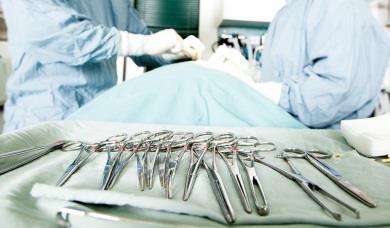Introducing barcoding and electronic tagging to the health service could save thousands of lives, explains Chris Doyle

This article was part of the eProcurement channel, in association GS1. The channel is no longer being updated.
The release of new never events data has shown once again that inexcusable errors occurring within the NHS are still too common.
The occurrence of a never event indicates a failure of protective systems and processes and, when we’re talking life and death, even one of these is too many.
Health secretary Jeremy Hunt recently told the Patient Safety Congress that up to one in 20 hospital deaths in England could have been prevented.
But there are solutions available. Simple and standardised technologies such as barcoding and electronic tagging can help prevent many surgical and medicinal never events, enabling healthcare professionals to keep patients safe and provide the highest levels of care possible.
‘Adpoting standardised supply chains could save up to 43,000 lives’
According to McKinsey, adopting a single global supply chain standard across the entire healthcare supply chain could save up to 43,000 lives and avert 1.4 million patient disabilities globally.
Recognising this, a recent report by NHS England’s events task force has called for an improvement in patient safety, highlighting the potential for GS1 Standards to help achieve this.

The process of using instruments in operating theatres is clearly prone to human error, with 123 of the 312 never events reported in the last year being items wrongly left inside patients. Most people are familiar with automated checkouts in supermarkets and the warning ‘unexpected item in the bagging area’.
‘Over one third of never events reported last year occured within operating theatres’
This technology, which enables the till to know where each item is and whether it has been properly accounted for, can also be applied to theatre environments.
Similarly, serious medication errors are common in hospitals and often occur during order transcription or administration of medication. An additional layer of safety is provided through the use of barcodes, which sees medication tracked from when it is first prescribed, through dispensing to when it’s administered to the patient.
Furthermore, warnings can flag to healthcare providers when medicine is overdue, may interact with other medicines the patient is taking, or do not match the prescription. Preliminary studies have suggested the use of barcodes on medicines to the single unit level can help to reduce medication error rates by 41.4 per cent.
We are pleased that NHS England has recognised the potential for GS1 Standards to improve patient safety, but we now need to see these standards put into action.
As an industry we cannot afford to let never events continue when there is a simple solution available. GS1 Standards are already mandated within the healthcare sector to improve procurement efficiency and reduce costs.
The rollout of the same technologies in operating theatres could help to improve patient safety, so what are we waiting for?
Chris Doyle, industry marketing manager of healthcare, GS1 UK
























1 Readers' comment